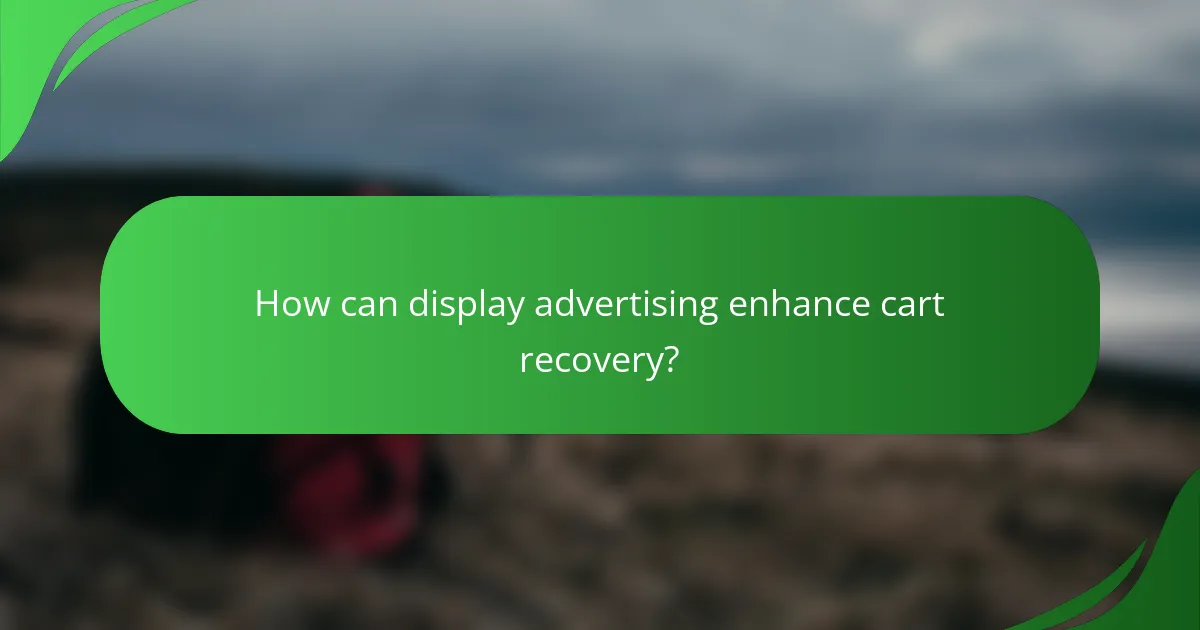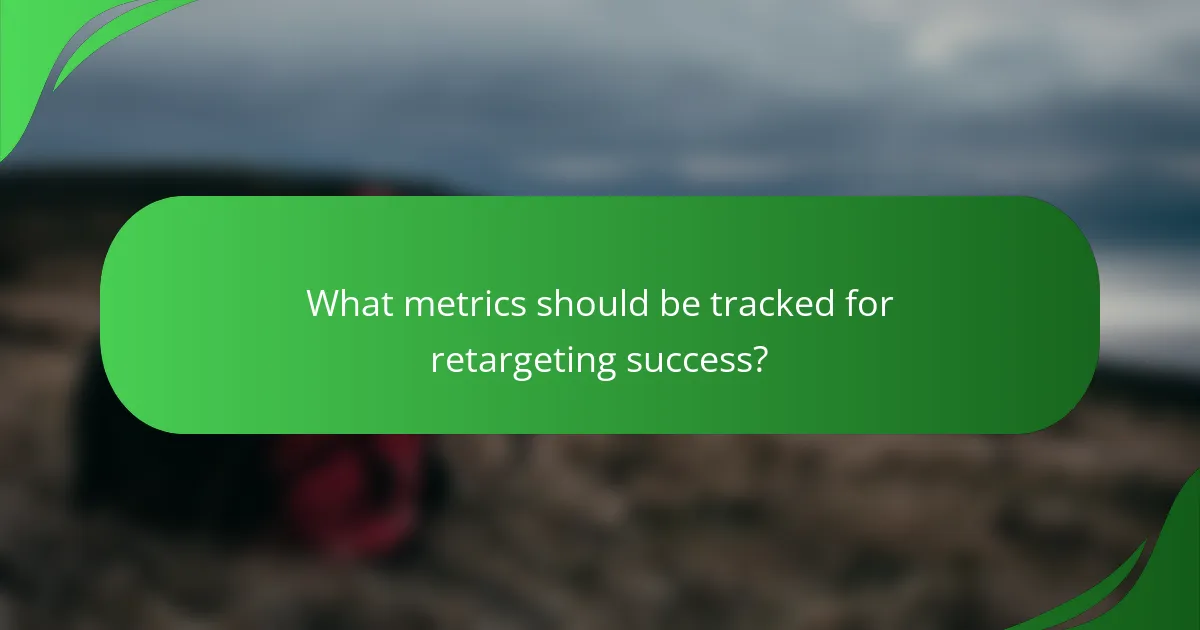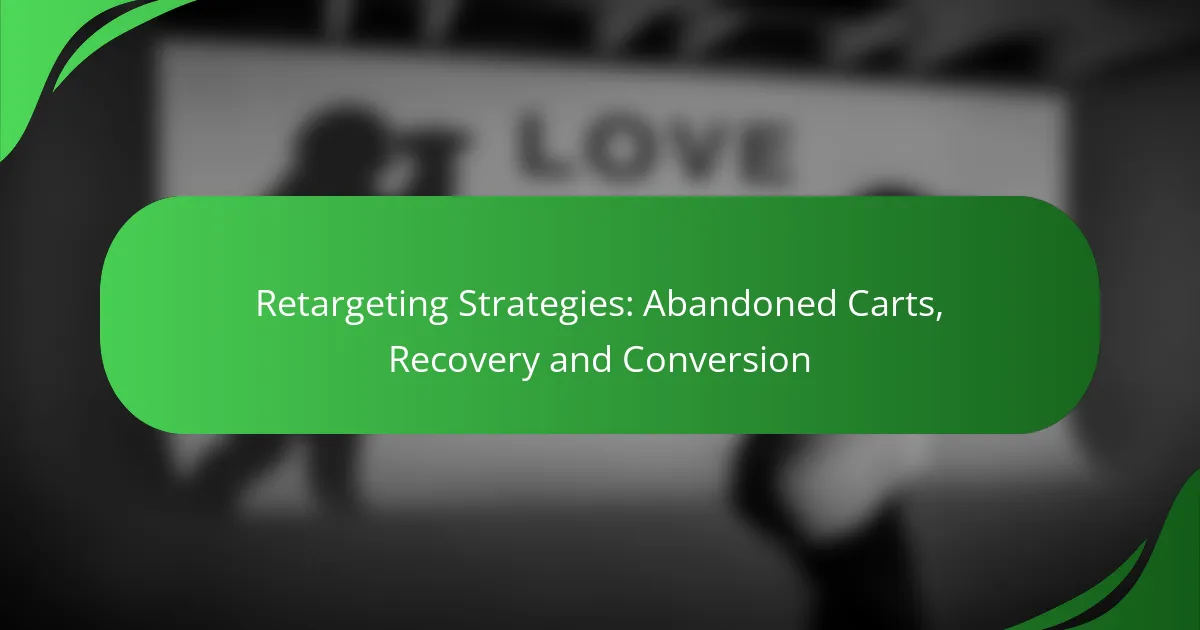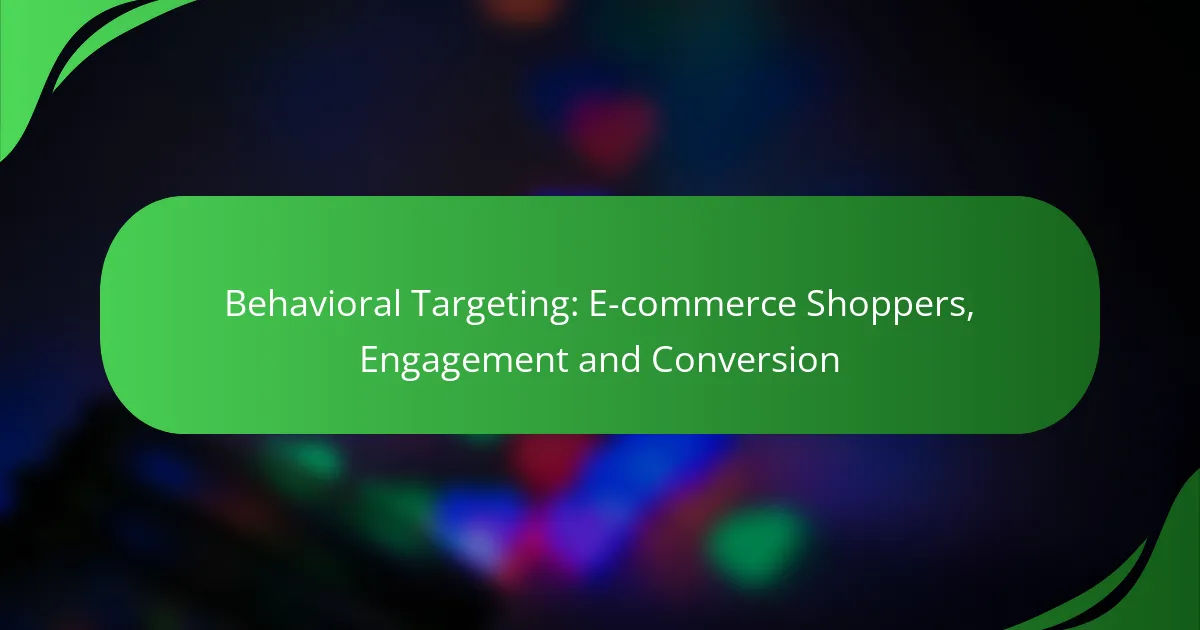Retargeting strategies for abandoned carts are essential for recovering lost sales and boosting conversion rates. By utilizing targeted email reminders, dynamic ads, and incentive offers, businesses can effectively re-engage customers who have shown interest in their products. Additionally, display advertising plays a crucial role in reminding potential buyers of items they left behind, increasing the likelihood of completing their purchases.

What are effective retargeting strategies for abandoned carts in Australia?
Effective retargeting strategies for abandoned carts in Australia include targeted email reminders, dynamic ads, and incentive offers. These methods aim to re-engage customers who have shown interest in products but did not complete their purchases, ultimately increasing conversion rates.
Email reminders
Email reminders are a direct way to reconnect with customers who have abandoned their carts. Sending a series of follow-up emails within a few hours to a couple of days after abandonment can remind customers of their interest and encourage them to complete their purchase.
Consider personalizing these emails with the items left in the cart and a friendly message. A typical approach includes sending an initial reminder within 24 hours, followed by a second reminder a few days later, which can significantly boost recovery rates.
Dynamic ads
Dynamic ads allow you to display personalized advertisements featuring the exact products a customer left in their cart. These ads can appear on social media platforms and various websites, reminding customers of their abandoned items.
Utilizing retargeting pixels, you can track user behavior and serve tailored ads that resonate with their previous shopping experience. This strategy can enhance visibility and keep your brand top-of-mind, leading to higher chances of conversion.
Incentive offers
Incentive offers, such as discounts or free shipping, can be powerful motivators for customers to finalize their purchases. Providing a limited-time discount or a special offer for returning customers can create a sense of urgency.
When implementing this strategy, ensure that the incentives are clearly communicated in your email reminders and dynamic ads. For example, a 10% discount or free shipping on orders over a certain amount can effectively entice customers to complete their transactions.

How can display advertising enhance cart recovery?
Display advertising can significantly boost cart recovery by reminding customers of items they left behind, thereby increasing the likelihood of conversion. By strategically placing ads across various platforms, businesses can re-engage potential buyers and encourage them to complete their purchases.
Personalized ad content
Personalized ad content is crucial for effective cart recovery. Tailoring ads to reflect the specific items a customer abandoned can create a sense of relevance and urgency. For example, showing a discount on a previously viewed product can entice customers to return and finalize their purchase.
Utilizing dynamic ad technology allows businesses to automatically generate personalized content based on user behavior. This approach can lead to higher engagement rates, as customers are more likely to respond to ads that resonate with their interests.
Frequency capping
Frequency capping helps manage how often customers see retargeting ads, preventing ad fatigue. By limiting the number of times a single user is exposed to the same ad, businesses can maintain interest without overwhelming potential buyers. A common practice is to cap impressions to a few times per week.
Finding the right balance is essential; too few impressions may lead to missed opportunities, while too many can annoy users. Testing different frequency levels can help determine the optimal exposure that maximizes conversions without causing irritation.

What are the best practices for retargeting ads?
The best practices for retargeting ads focus on effectively reaching potential customers who have shown interest but did not complete a purchase. Implementing strategies like segmented audience targeting and clear calls-to-action can significantly enhance recovery and conversion rates.
Segmented audience targeting
Segmented audience targeting involves dividing your audience into specific groups based on their behavior and preferences. This allows for tailored messaging that resonates more with each segment, increasing the likelihood of conversion. For instance, you might target users who abandoned their carts differently than those who viewed products but did not add them to their cart.
To implement this, consider using data analytics tools to identify key segments such as frequent visitors, first-time users, or customers who have made past purchases. Each group can receive personalized ads that address their unique interests or concerns, enhancing engagement and response rates.
Clear call-to-action
A clear call-to-action (CTA) is essential in retargeting ads to guide users toward the next step, whether it’s completing a purchase or signing up for a newsletter. Effective CTAs should be concise, action-oriented, and visually distinct. Phrases like “Complete Your Purchase” or “Get 10% Off Your Next Order” can prompt immediate action.
Ensure that your CTA stands out within the ad design and is placed strategically to catch the viewer’s attention. Testing different CTAs can help identify which messages resonate best with your audience, allowing for continuous improvement in your retargeting efforts.

What metrics should be tracked for retargeting success?
Tracking the right metrics is essential for evaluating the success of retargeting campaigns. Key performance indicators such as click-through rate, conversion rate, and return on ad spend provide insights into how effectively your ads are engaging potential customers and driving sales.
Click-through rate
Click-through rate (CTR) measures the percentage of users who click on your retargeting ads compared to the total number of users who viewed them. A higher CTR indicates that your ads are relevant and compelling to your audience. Aim for a CTR in the low to mid-single digits as a benchmark for effective retargeting.
To improve CTR, focus on creating eye-catching visuals and clear calls to action. Testing different ad formats and messaging can help identify what resonates best with your audience.
Conversion rate
Conversion rate is the percentage of users who complete a desired action, such as making a purchase, after clicking on your retargeting ad. A strong conversion rate suggests that your ads are effectively persuading users to return and finalize their purchases. Typical conversion rates for retargeting can range from 2% to 10%, depending on the industry.
To enhance conversion rates, ensure that your landing pages are optimized for user experience and aligned with the ad content. Offering incentives like discounts or free shipping can also encourage users to convert.
Return on ad spend
Return on ad spend (ROAS) measures the revenue generated for every dollar spent on advertising. A favorable ROAS indicates that your retargeting efforts are financially effective. Generally, a ROAS of 4:1 or higher is considered successful, meaning you earn four dollars for every dollar spent.
To maximize ROAS, continuously analyze your campaigns and adjust targeting strategies based on performance data. Focus on high-value segments of your audience and allocate your budget towards the ads that yield the best returns.

How to create a retargeting campaign?
Creating a retargeting campaign involves identifying your audience, selecting appropriate ad platforms, and crafting targeted messages to encourage conversions. This process helps recapture potential customers who showed interest but did not complete a purchase.
Define audience segments
Defining audience segments is crucial for effective retargeting. Start by analyzing user behavior on your website, such as pages visited, products viewed, and items left in the cart. Common segments include cart abandoners, past purchasers, and users who browsed specific categories.
Consider using tools like Google Analytics or Facebook Pixel to gather data on user interactions. This data allows you to create tailored ads that resonate with each segment, increasing the likelihood of conversion. For example, you might show a discount to users who abandoned their carts or recommend related products to past buyers.
Select ad platforms
Selecting the right ad platforms is essential for reaching your defined audience segments effectively. Popular platforms for retargeting include Google Ads, Facebook Ads, and Instagram Ads. Each platform offers unique targeting options and formats that can enhance your campaign’s performance.
Evaluate where your audience spends their time and choose platforms accordingly. For instance, if your target demographic is active on social media, Facebook and Instagram may be ideal. On the other hand, if your audience frequently uses search engines, Google Ads could be more effective. Test different platforms to see which yields the best return on investment.

What tools can assist with retargeting?
Several tools can enhance your retargeting efforts by helping you track user behavior and deliver personalized ads. These tools facilitate the recovery of abandoned carts and improve conversion rates by targeting users who have shown interest in your products.
AdRoll
AdRoll is a comprehensive retargeting platform that allows businesses to create personalized ad campaigns across various channels. It uses data from your website to track visitors and serve them relevant ads on social media, email, and other websites.
To get started with AdRoll, you need to install their tracking pixel on your site. This pixel collects data on user behavior, enabling you to segment your audience and tailor your ads accordingly. Consider setting up dynamic ads that showcase the exact products users viewed to increase engagement.
Facebook Pixel
The Facebook Pixel is a powerful tool for retargeting users who have interacted with your website. By placing the pixel on your site, you can track user actions and create custom audiences for targeted advertising on Facebook and Instagram.
To utilize the Facebook Pixel effectively, ensure you define clear conversion events, such as completed purchases or added items to the cart. This will help you optimize your ad campaigns based on user behavior. Remember to comply with privacy regulations, such as GDPR, by informing users about data collection practices.
Google Remarketing
Google Remarketing allows you to display ads to users who have previously visited your website while they browse other sites within the Google Display Network. This tool helps keep your brand top-of-mind and encourages users to return and complete their purchases.
To implement Google Remarketing, set up a remarketing list in Google Ads and create tailored ads that resonate with your audience. You can segment your lists based on user actions, such as those who abandoned their carts or viewed specific products. Monitor your campaigns regularly to adjust bids and improve performance based on user engagement metrics.



